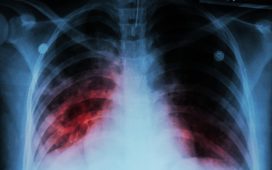Probability of fracture lower for participants in the tertile of the lowest anxiety scores
MONDAY, May 14, 2018 (HealthDay News) — Anxiety levels are associated with bone mineral density (BMD) and fracture risk in the lumbar spine and femoral neck among postmenopausal women, according to a study published online May 7 in Menopause.
Antonino Catalano, M.D., Ph.D., from the University Hospital of Messina in Italy, and colleagues recruited 192 women to examine the role of severity of anxiety in bone health. Postmenopausal women referred for osteoporosis underwent assessment for the Fracture Risk Assessment Tool score and BMD at the lumbar spine and femoral neck; the Hamilton Anxiety Rating Scale (HAMA) scores, Beck Depression Inventory scores, and the 36-Item Short Form Health Survey scores were determined for evaluation of quality of life.
The researchers found that the probability of fracture was lower for participants allocated to the tertile of the lowest HAMA scores versus the tertile of highest scores (HAMA-1 versus HAMA-3); the same trend was seen when comparing the HAMA-2 and HAMA-3 tertiles. Compared with women in the HAMA-1 group, those in the HAMA-3 group had lower lumbar T-score values in the lumbar spine; lower T-score values were seen in HAMA-3 versus HAMA-2. In HAMA-3 versus HAMA-1, the prevalence rate of vertebral fractures was higher, but the difference was not significant. There was a significant correlation for anxiety levels with age, menopausal age, years since menopause, and depressive symptoms; multiple regression analysis predicted reduced BMD in the lumbar spine.
“Physicians should consider fracture risk assessment in postmenopausal women with anxiety,” the authors write.
Copyright © 2018 HealthDay. All rights reserved.








